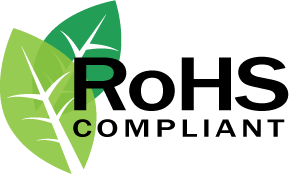
Texas Instruments LMZ14201TZ-ADJ/NOPB
LMZ14201TZ-ADJ/NOPB
TO-PMOD-7, Power Module

3676286-LMZ14201TZ-ADJ/NOPB
DC DC CONVERTER 0.8-6V 1A
- Lifecycle StatusACTIVE (Last Updated: 5 days ago)
- Factory Lead Time6 Weeks
- Contact Plating
Contact plating (finish) provides corrosion protection for base metals and optimizes the mechanical and electrical properties of the contact interfaces.
Gold - MountSurface Mount
- Mounting TypeSurface Mount
- Package / CaseTO-PMOD-7, Power Module
- Number of Pins7
- SwitchingFrequency1MHz
- Operating Temperature
The operating temperature is the range of ambient temperature within which a power supply, or any other electrical equipment, operate in. This ranges from a minimum operating temperature, to a peak or maximum operating temperature, outside which, the power supply may fail.
-40°C~125°C - Packaging
Semiconductor package is a carrier / shell used to contain and cover one or more semiconductor components or integrated circuits. The material of the shell can be metal, plastic, glass or ceramic.
Tape & Reel (TR) - SeriesSIMPLE SWITCHER®
- Size / Dimension0.40Lx0.39W x 0.18 H 10.2mmx9.9mmx4.6mm
- Tolerance5%
- JESD-609 Codee3
- Pbfree Codeyes
- Part Status
Parts can have many statuses as they progress through the configuration, analysis, review, and approval stages.
Active - Moisture Sensitivity Level (MSL)3 (168 Hours)
- Number of Terminations7
- ECCN CodeEAR99
- Temperature Coefficient
The resistance-change factor per degree Celsius of temperature change is called the temperature coefficient of resistance. This factor is represented by the Greek lower-case letter “alpha” (α). A positive coefficient for a material means that its resistance increases with an increase in temperature.
100 ppm/°C - TypeNon-Isolated PoL Module
- Resistance49mOhm
- Terminal FinishMatte Tin (Sn)
- ApplicationsITE (Commercial)
- GenderReceptacle
- Power Rating3W
- Voltage - Rated DC100V
- Max Power Dissipation
The maximum power that the MOSFET can dissipate continuously under the specified thermal conditions.
6W - Terminal PositionSINGLE
- Terminal Form
Occurring at or forming the end of a series, succession, or the like; closing; concluding.
GULL WING - Peak Reflow Temperature (Cel)245
- Number of Functions1
- Depth9.85mm
- Current Rating
Current rating is the maximum current that a fuse will carry for an indefinite period without too much deterioration of the fuse element.
6A - Frequency48MHz
- Base Part NumberLMZ14201
- Number of Outputs1
- Number of Contacts19
- Efficiency90%
- Voltage - Input (Max)42V
- Output Voltage6V
- Output TypeAdjustable
- Max Output Current
The maximum current that can be supplied to the load.
1A - Input Voltage-Nom24V
- Memory Size
The memory capacity is the amount of data a device can store at any given time in its memory.
2MB - Load Capacitance
the amount of capacitance measured or computed across the crystal terminals on the PCB. Frequency Tolerance. Frequency tolerance refers to the allowable deviation from nominal, in parts per million (PPM), at a specific temperature, usually +25°C.
15pF - Output Current
The rated output current is the maximum load current that a power supply can provide at a specified ambient temperature. A power supply can never provide more current that it's rated output current unless there is a fault, such as short circuit at the load.
1A - Throw ConfigurationSPDT
- Viewing Angle
the angle at which a display can be viewed with acceptable visual performance.
60 ° - Frequency Tolerance
the maximum allowable deviation from the nominal crystal frequency at a specified temperature, usually 25℃. The recommended frequency tolerance of the crystal over the manufacturing process is ±50 ppm.
0.005% - Control FeaturesEnable, Active High
- Max Output Voltage
The maximum output voltage refers to the dynamic area beyond which the output is saturated in the positive or negative direction, and is limited according to the load resistance value.
6V - Control ModeVOLTAGE-MODE
- Luminous Intensity
In photometry, luminous intensity is a measure of the wavelength-weighted power emitted by a light source in a particular direction per unit solid angle, based on the luminosity function, a standardized model of the sensitivity of the human eye.
30 mcd - Min Output Voltage800mV
- IsolationNon-Isolated
- FeaturesUVLO
- Height4.8mm
- Thickness4.57mm
- REACH SVHCNo SVHC
- Radiation Hardening
Radiation hardening is the process of making electronic components and circuits resistant to damage or malfunction caused by high levels of ionizing radiation, especially for environments in outer space (especially beyond the low Earth orbit), around nuclear reactors and particle accelerators, or during nuclear accidents or nuclear warfare.
No - RoHS Status
RoHS means “Restriction of Certain Hazardous Substances” in the “Hazardous Substances Directive” in electrical and electronic equipment.
ROHS3 Compliant - Lead FreeLead Free
- Datasheets :
- PCN Design/Specification :
















